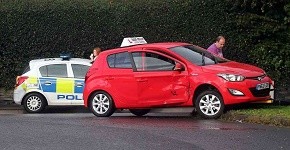DRIVING TEST CHANGES: The Driver and Vehicle Standards Agency has now unveiled a handful of changes to the car practical driving test.
Their strategy is to significantly improve the road test examination as an accurate assessment.
The driving test changes attempt to decrease the number of fatal crashes in the Great Britain.
The ability of learner drivers to drive safely and independently in modern driving conditions undergoes most scrutiny.
As a rule, the roads and highways in Great Britain are undoubtedly among the safest around the world. But, keeping newly-qualified drivers safe has come to the forefront.
Note: The new driving test rules changes will start from the 4th of December 2017.
The Department for Transport (DfT) official statistics for the number of fatalities resulting from road accidents in Great Britain are alarming. The figures show 3,409 road deaths for the year 2000 (includes all road users).
Fortunately, the numbers have been steadily improving. The latest statistics show 1,730 road fatalities occurred in the year of 2015. That was a decrease of 3% on 2014 statistics.
Of these 1,730 road fatalities in the year 2015, many of which were pedestrians or foot traffic as opposed to drivers or riders of vehicles and motorcycles.
Driving Test Rules Changes Questionnaire
The proposals to (service and repair) change car driving test started to rev up towards the end of 2016. Some of the proposed changes include raising the age limit.
 DVSA wanted the use of vehicle satellite navigation (satnav) part of the practical exercises. One major proposal was to raise the minimum age at which drivers need to declare themselves fit to drive.
DVSA wanted the use of vehicle satellite navigation (satnav) part of the practical exercises. One major proposal was to raise the minimum age at which drivers need to declare themselves fit to drive.
The current age for this restriction is 70 and they suggested raising it to 75 years old. DfT consultation attempts to steer an increase in the pass rate for learner drivers. The pass rate is currently under 50%.
But, some of the controversial proposals could result in part-privatisation of the practical examination. It could also speed up the closure of some test centres. This will result in job losses at motor agencies.
It could also affect the fees for some vehicle services. For example, we may see an increase in charges from businesses selling personalised vehicle registration plates.
Driving Test Changes Begin 4th December 2017
As this trial becomes successful, we will see the biggest radical reorganisation of the DVSA practical driving test for cars since 1996. That year saw the introduction of the first written theory exam.
A consultation period on the proposed driving test changes ran until the 25th of August 2016. There was an online questionnaire open to members of the public for their views.
One of the Chief Driving Examiners also commented about the proposed changes to driving test in the United Kingdom.
He said: “Candidates will receive more responsibility for making decisions during the test. We want them to show they can follow the UK Highway Code Rules. They need to cope with distractions and assess risk without the intervention of their instructor or examiner.
Driver and Vehicle Standards Agency
These are the official Driver and Vehicle Standards Agency references to the driving test changes:
- An increase in the length of the ‘independent driving‘ part of the test to 20 minutes. That increases from 10 minutes as of the 4th of December 2017.
- Most candidates will need to follow directions from a sat nav during the ‘independent driving‘ part. The test examiner will set up the route on a sat nav device supplied by the examiner.
- A replacement of the ‘reverse around a corner‘ and ‘turn-in-the-road‘ manoeuvres with more real-life scenarios. The tester will ask the learner driver to perform of one these 3 reversing manoeuvres:
- Parallel park at the side of the road.
- Park in a bay (driving in and reversing out or reversing in and driving out).
- Pull up on the right-hand side of the road, reverse for 2 car lengths and then rejoin the traffic.
- Answer two vehicle safety questions during the test (known as the ‘show me, tell me‘ questions). The examiner will ask you:
- A ‘tell me‘ question before you start driving (explaining how to carry out a safety task).
- A ‘show me‘ question (showing how to carry out a safety task). This part gets completed while you drive (e.g. show how to wash the windscreen using the car controls and wipers).
The president of the Automobile Association (AA) embraced the revamped car practical driving test. New drivers are a higher risk on the roads. So, there is a higher need to improve their preparations for real-world driving.
The proposed driving test changes should examine learner drivers in a realistic manner. This will better prepare them for the day when the L-plates finally get removed from the vehicle.
ALSO IN THIS SECTION
Articles on Homes and Family Life: News stories about rules for home and lifestyle regulations.
British Transport Competition: Autonomous Vehicle Technology companies compete to win £30 million.
Headlamp Alignment Rules: March 2016 sees new regulation changes aimed at headlamp alignment.
Motorway Lessons for Learners: Motorway driving instruction part of learning to drive a car from 2018.
Splashing Pedestrian Laws: Cars splashing pedestrians with puddles is illegal in the United Kingdom.
Traffic Sign Regulations: DfT launch the new Traffic Signs Regulations and General Directions.

